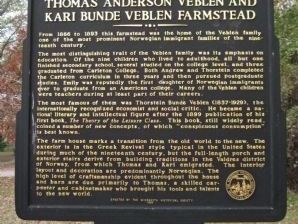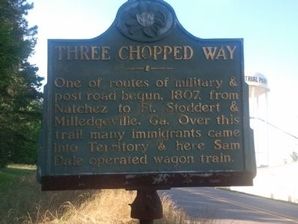Memorials

Thomas Anderson Veblen and
Kari Bunde Veblen Farmstead
From 1866 to 1893 this farmstead was the home of the Veblen family one of the most prominent Norwegian immigrant families of the nineteenth century.
The most distinguishing trait of the Veblen family was its emphasis on education. Of the nine children who lived to adulthood, all but one finished secondary school, several studied on the college level, and three graduated from Carleton College. Both Andrew and Thorstein completed the Carleton... Read More

Entrepreneur and philanthropist who bequeathed the bulk of his estate to establish Roman Catholic High School for Boys, the first free Catholic high school in the US. Founded here in 1890, the school initiated a diocesan high school system that became a model throughout the nation. Coming from a poor immigrant family, Cahill sought to provide young men from similar backgrounds with the secondary education denied him.

These two Mediterranean Revival mansions were designed for Magnus and Annie Swenson and their daughter Mary North by Madison architects Law and Law. Swenson was a Norwegian immigrant who became an internationally famous inventor and humanitarian. Among his many and varied activities, Swenson patented over 200 machines and processes, built hydroelectric dams on the Wisconsin River, and founded the Norwegian-American Steamship Lines. Please respect the privacy of the occupants.

The Delta represents a “melting pot” of diverse cultures. And most of them got here by canoe.
Canoeing is the oldest form of water transportation on the Mississippi River-at least 2,000 years old! In the Quapaw tribal history, they arrived form the Ohio River Valley in canoes-that’s why the tribe became known as “The Downstream People.”
Native Americans
American Indians were among the first people to call this area home. The earliest date back to 9,500 B. C. Numerous Indian communities... Read More

One of routes of Military & post road begun, 1807, from Natchez to Ft. Stoddert & Milledgeville, Ga. Over this trail many immigrants came into Territory & here Sam Dale operated wagon train.

In 1852 German immigrant Augustus W. Timms obtained Sepulveda's Landing on the mudflats near here. He built a wharf, added a warehouse, corral and other facilities to service shipping and running of stages to Los Angeles. Timms was a pioneer in the development of the harbor and for over fifty years this area was known as Timms Point.

Tingley Memorial Hall honors William Wilson Cooke, a graduate of Claflin College and the first African American man working as a senior architectural designer in the US Supervising Architect's Office in Washington, D.C, who designed the building. The Hall also memorializes attempts at improving higher education and the future of young African Americans in South Carolina.

On this site in 1852, Jewish American philanthropist, Judah Touro, a distinguished veteran of the Battle of New Orleans, established Touro Infirmary to care for seamen, immigrants, slaves, and the indigents of all races and religions. Touro Infirmary relocated to Prytania Street in 1882. As a full service hospital, Touro Infirmary continues to provide health care to all of New Orleans.
